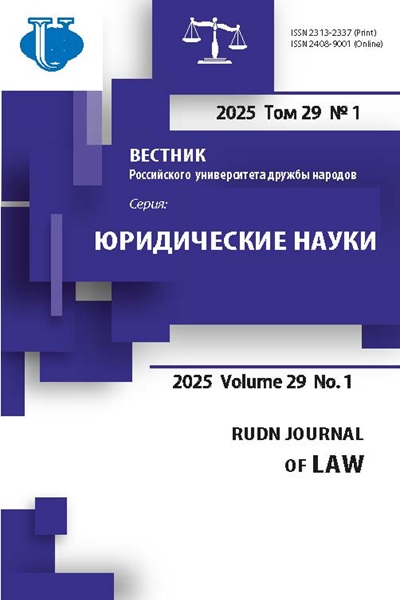Abstract
This study is devoted to the specific features and peculiarities of the development of criminal punishment in ancient and medieval Russia during the period of the formation and strengthening of Russian statehood and its legal system. The author aims to acquire new scientific knowledge about the process of formation and evolution of the institution of criminal punishment in these historical periods. This includes examining the genesis and changes in both the social practice of criminal punishment and the legal category of criminal punishment in the legislation of that time. The article provides a detailed analysis of the institution of blood feud, its role within the spectrum of criminal penalties used in ancient Russian criminal law, as well as the reasons and conditions that led to its replacement by a system of material liability (compositions). The research is based on a wide range of literary sources, ancient Russian law, chronicles, and specific scholarly research works related to this period. It employs formal-logical, systemic-structural, historical, and dialectical methods of analysis. The study highlights the unique evolution of criminal law penalties in ancient Russian legislation across different periods. It specifies certain types of criminal punishments (such as “vira” and “flow and looting”) and means of proving guilt (including the “field” judicial duel). Special attention is given to the influence of the Christianization of Kievan Rus on the system of criminal punishment and on the overall criminal law doctrine of the country. The author argues that with the adoption of Christianity as the official religion in Russia, a new system for preventing criminal behavior emerged. The conclusions drawn indicate that as social and legal progress advanced, criminal punishment gradually transformed from a retrospective measure reflecting private to one that serves public interests. The institution of criminal punishment evolved from a means of collective responsibility to individual sanctions for specific criminal acts. Notably, the author concludes that social practices of punishment during the pre-state period aligned with retributivist concepts, while criminal punishment emerging from established state power reflects consequentialist principles.
















